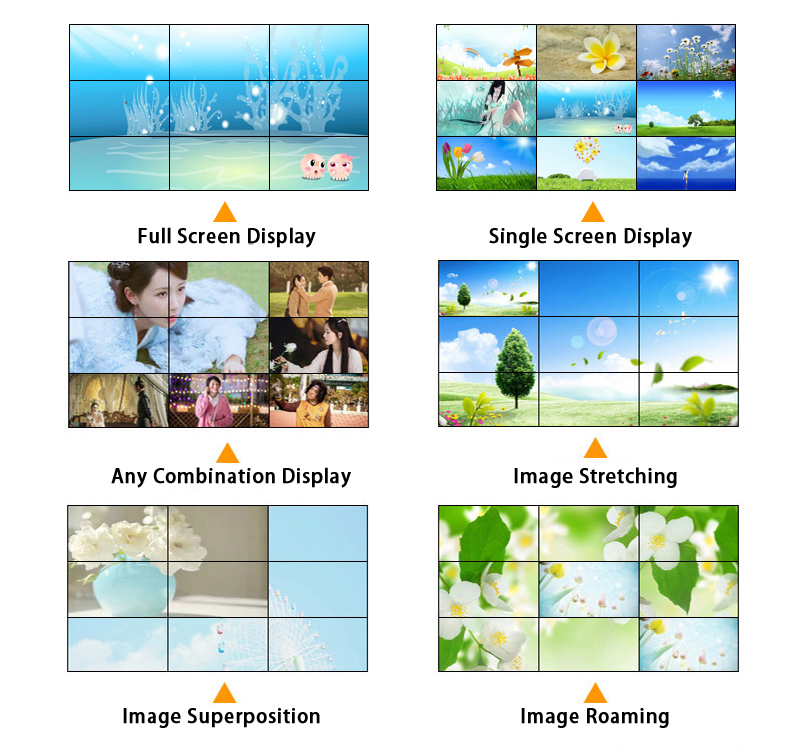The LED TV screen can be used as a display alone or as a large screen. According to different usage requirements, it can realize a variable and large variable screen function. For example, large-scale LCD splicing screens displaying discounts, promotions, etc. are often seen in large supermarkets, various shopping malls, and specialty stores. The unique conspicuous position and high-definition large screen can give people a shocking effect and attract customers. Eyeballs bring more business opportunities.
LED TV adopts professional digital document processing engine, which adopts motion detection and compensation calculation, interpolation calculation, edge smoothing processing, 3D filtering separation dynamic noise reduction technology, and clutter signal suppression and other cutting-edge processing technologies to achieve high image quality and high resolution, improved seamless stitching of saw-tooth.
● Intelligent split screen: adopts video extension technology, the picture is stable and arbitrarily switched, clear and smooth, and not distorted.

● Wireless control: network control screen, control switch, arbitrary screen switching, and can also monitor whether the screen is accurately controlled by monitoring.
● Uniformity: LED TV screen configuration compares the parameters such as bulb, brightness, color balance, etc., and automatically adjusts to the most perfect state.
● Advanced image processing technology: three-dimensional space filtering, reducing the image quality loss in the middle of the analog signal in the splicing, maintaining a very high splicing refresh rate.
● Long life: LED TV life is up to 60,000 hours compared to early projection bulbs.
● Slabization: easy to operate, easy to maintain, LED screen body and control system are plate standardization, convenient for installation, debugging, maintenance, etc.
Can be applied to auditoriums, conferences, banquets, vestibules, exhibitions, transportation, studios, command and control, etc.
● Catering, restaurants: With the improvement of people's living standards, people's demand for dining and hotel environment is also more demanding, which has promoted the continuous growth of the service industry. The LCD splicing screen can display the restaurant's restaurant or restaurant culture, image, promotion, entertainment activities, etc., attracting customers and enhancing their popularity.
● Meetings, training institutions, large-scale teaching rooms: ordinary large screens are increasingly unable to meet people's needs. The use of traditional projectors in conferences or training not only wastes time deployment, but also greatly reduces the efficiency of work and study. The LCD splicing screen has the characteristics of high definition, multi-screen use, etc., and can realize many different functions, such as comparison and differentiation. The corresponding products, topics, etc., can be freely converted only by setting them in advance.
● Commercial display, media advertising, product display: For the display of the advertising media, the LCD splicing screen displays high brightness and high resolution, and the color balance is just in line with the application requirements of commercial, media advertising and product display. This can greatly stimulate the customer's desire to purchase, so that the exhibits display content is deeply rooted in the hearts of the people, attracting more consumption.